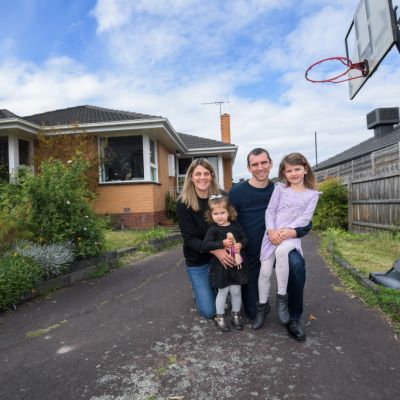House prices set to rise faster than wages next year even as property market slows and incomes pick up
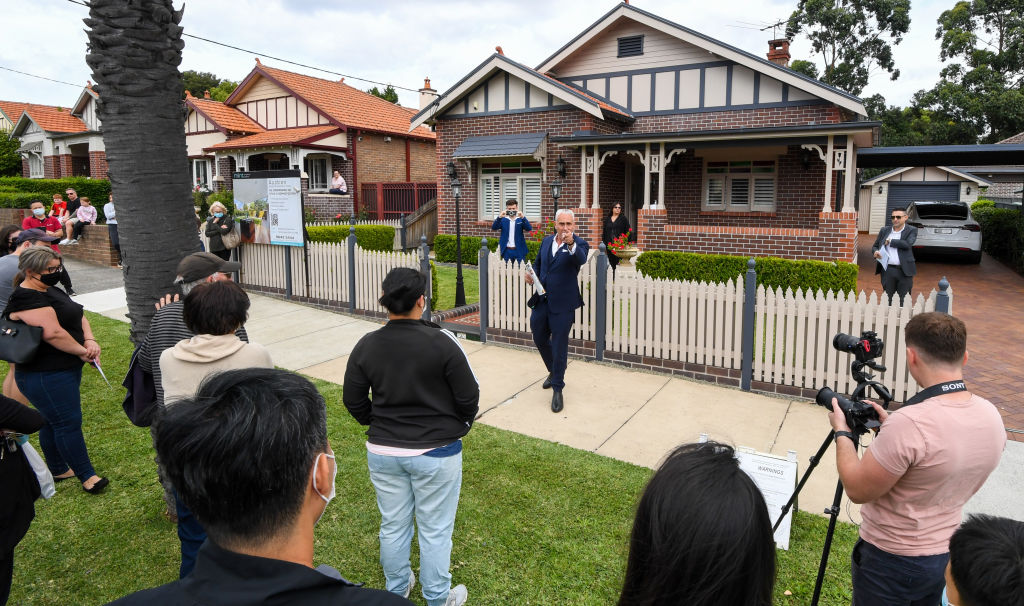
First-home buyers will struggle to get into the housing market even as wages improve and house prices slow, because house prices are still set to grow faster than wages next year, economists warn.
The grim prediction comes after weekly pay rose by 2.2 per cent nationally over the year to September and 0.6 per cent over the quarter, Australian Bureau of Statistics figures showed.
Over the same time, Australian capital city house prices boomed by a massive 21.9 per cent annually – and 3.5 per cent over the September quarter – to reach a national median of almost $1 million, on Domain data.
House prices skyrocketed even faster in Sydney, Canberra, Hobart and in some regional areas, by more than 30 per cent over the year.
ANZ senior economist Felicity Emmett said the widening gap between wages growth and house price rises had made it “extremely difficult” for those who did not already own property to get into the market.
Though rents had fallen in some cities, it would not be of much help to those wanting to buy, Ms Emmett said.
“First-home buyers need to save more than 80 per cent of their annual wages for a deposit at the moment … even [cheaper rents] doesn’t change how hard it is to get over the deposit hurdle,” she said.
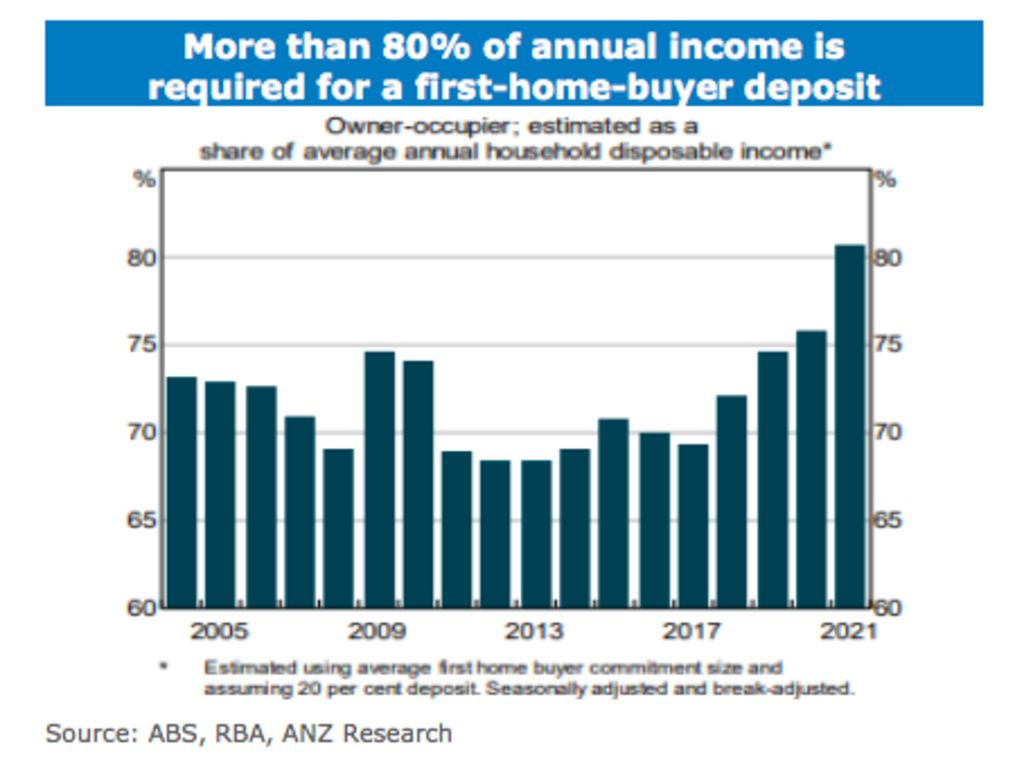
ANZ forecast that house prices would continue to rise – by just over 6 per cent next year – before falling by around 4 per cent in 2023.
A slower pace of growth is likely because of affordability constraints, more homes being listed for sale, a rise in fixed mortgage rates and a recent move by the bank regulator to reduce maximum borrowing capacity slightly, the bank warned.
But even a 6 per cent rise for housing would be well above the Reserve Bank’s wages growth forecast of 3 per cent by the end of 2023.
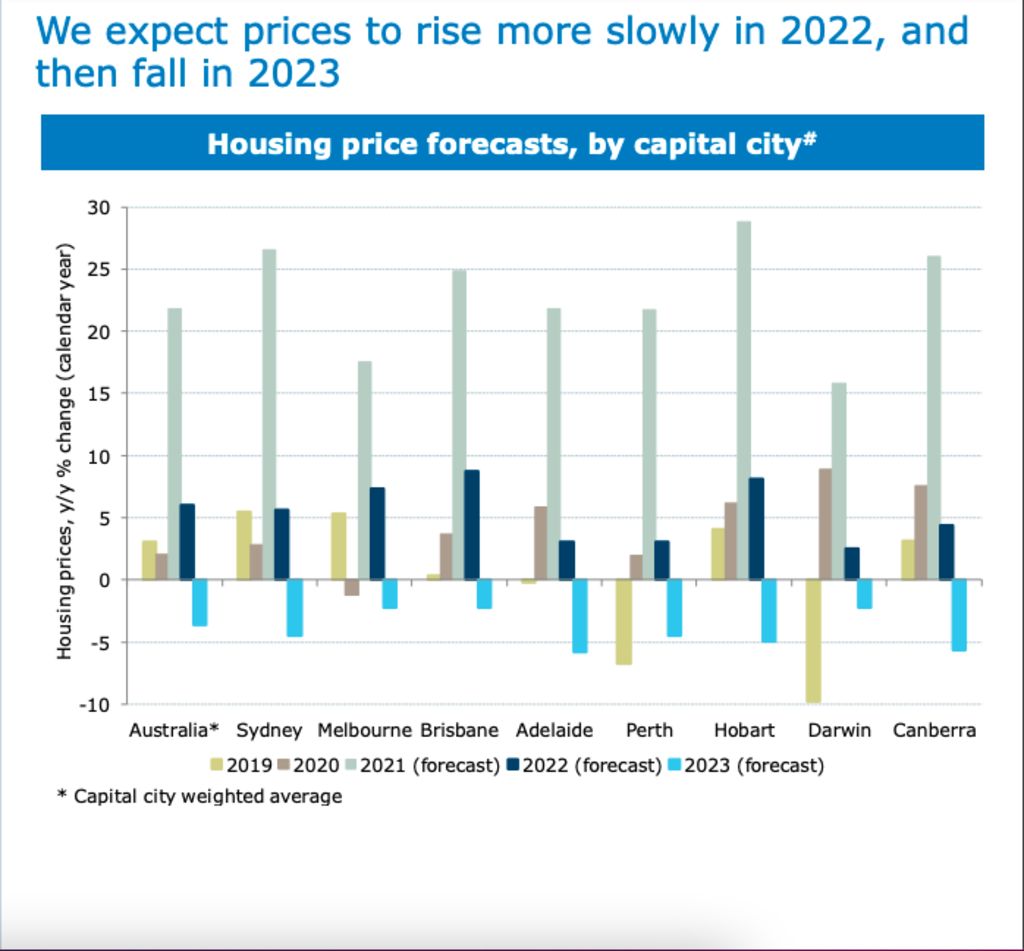
Even if property prices fall in line with ANZ’s view, housing would still be 27 per cent more expensive at the end of 2023 than at the end of 2019.
Faster wage growth and an increase in the price of goods and services would be enough to see interest rates rise earlier than expected, Ms Emmett said.
Like ANZ, Westpac is also predicting a rise in house prices and in interest rates over the next two years.
Westpac senior economist Matthew Hassan said house prices would again rise faster than wages. An 8 per cent rise in house prices was predicted for 2022, while wage growth would be 3 per cent.
“It’s a difficult position to be in, particularly with the pressure being added to the markets in regional centres … It puts would-be buyers in an even trickier situation,” Mr Hassan said.
“They need to decide: ‘Do I find something to meet most of my needs or wait it out in the rental market?’”
Mr Hassan believed the Reserve Bank would raise the cash rate by early to mid-2023 by 15 basis points, with other rises expected later in the year.
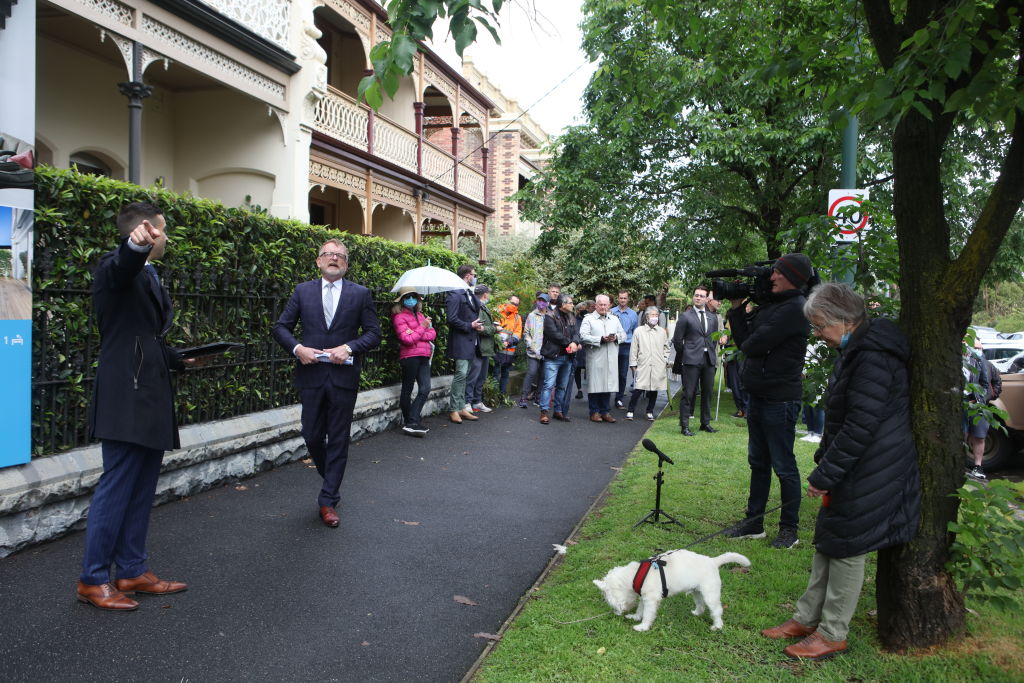
While some first-home buyers are borrowing more money, others are using the Bank of Mum and Dad to get into the market.
Will Unkles, a mortgage broker and director of 40Forty Finance, said 60 to 70 per cent of his clients – usually buying in the inner-city suburbs of Melbourne – were using cash gifts from their parents to help them get into the market.
“The challenges of saving for a deposit continues to be the biggest deterrent for people getting into the housing market,” Mr Unkles said.
He said governments needed to put thought into their first-home buyer schemes, which were not doing enough to help people get into the market.
Most of the first-home-buyer tax benefits and schemes cut out at $750,000 in Melbourne and $800,000 in Sydney. These caps sit well under the median house prices in each city – $1,037,950 in Melbourne and $1,499,126 in Sydney.
Domain chief of economics and research Nicola Powell said looking at the difference in wage growth and house prices would be a “heart-stopping” moment for first-home buyers.
“It pushes saving for a deposit out of reach even further,” Dr Powell said.
She said one key to the market would be how population growth bounced back after the reopening of borders that had been closed to international buyers over the past two years.
“Weak population growth could influence the market next year because many Australians brought forward their decisions to buy during the pandemic,” Dr Powell said. “Next year more listings will return and that will outstrip demand from buyers.”
We recommend
We thought you might like
States
Capital Cities
Capital Cities - Rentals
Popular Areas
Allhomes
More
